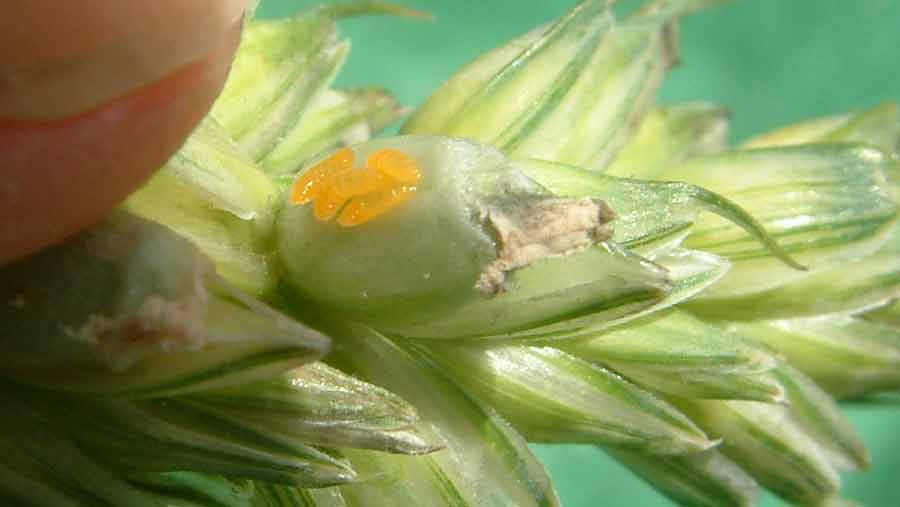Growers to lose vital weapon against key wheat pests
 Orange-wheat-blossom-midge larvae
Orange-wheat-blossom-midge larvae Wheat bulb fly and orange wheat blossom midge are set to be much harder to control in wheat, following the loss of key insecticide chlorpyrifos.
Last week the Health and Safety Executive (HSE) announced the withdrawal of products containing the active ingredient in the UK, which includes Dursban.
Following a European Union review, new human health based safety levels (known as endpoints) were agreed in 2015 for chlorpyrifos, aimed at protecting sprayer operators.
See also: Risk of wheat bulb fly damage is highest since 2011
Subsequent risk assessments carried out by the Health and Safety Executive (HSE) and endorsed by the Expert Committee on Pesticides (ECP) have indicated that most currently authorised uses of chlorpyrifos exceed these newly agreed endpoints.
This effectively means from 1 April, the only permitted use of chlorpyrifos will be the protected brassica seedling drench treatment applied via an automated gantry sprayer.
Bill Parker, AHDB director of research and knowledge exchange for crops, said: “The withdrawn chlorpyrifos options are highly unlikely to return to the UK.
“Consequently, we feel it is important to focus on the remaining options and how they can be exploited in a sustainable manner, rather than to dwell on what has gone.”
AHDB aims to help farmers by highlighting alternative control options over the coming weeks, but acknowledges that the efficacy of the alternative options vary.
The active was at the heart of an industry-led campaign promoting the use of low drift nozzles under the “Say NO to Drift Campaign”. It was launched at the end of 2011, but this focused on minimising drift into watercourses rather than operator exposure.

